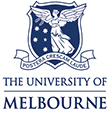Satb1 directs the differentiation of TH17 cells through suppression of IL-2 expression
Authors:
- Köhne, Maren
- Shakiba, Mehrnoush Hadaddzadeh
- Schmidleithner, Lisa
- Schulte-Schrepping, Jonas
- Scholz, Rebekka
- Elmzzahi, Tarek
- Sommer, Daniel
- Li, Yuanfang
- Carraro, Caterina
- De Domenico, Elena
- Wißfeld, Jannis
- Händler, Kristian
- Hamada, Doaa
- Frolov, Aleksej
- Cheng, Xiaoxiao
- Baumgart, Ann-Kathrin
- Holsten, Lisa
- Osei-Sarpong, Collins
- Bourry, Svenja
- Thabet, Yasser
- Renken, Hannes
- Paulusch, Stefan
- Sadlon, Timothy
- Buch, Thorsten
- Wunderlich, F. Thomas
- Wickenhauser, Claudia
- Alferink, Judith
- Kuhlmann, Tanja
- Geyer, Matthias
- Bonaguro, Lorenzo
- Barry, Simon C.
- Schultze, Joachim L.
- Beyer, Marc D.
Details:
Cell Reports, Volume 44, Issue 7, 2025-07-22
Article Link: Click here
T helper (TH)17 cells are crucial for host defense in barrier organs, and their altered functionality can disrupt tissue homeostasis, increasing the risk of autoimmune diseases. Thus, it is essential to understand the mechanisms controlling TH17 differentiation to develop strategies influencing their role in diseases. Here, we identified Special AT-rich sequence-binding protein 1 (Satb1) as a pioneering factor for TH17 development. Satb1 is highly expressed in TH17 cells, and loss of Satb1 prevents the differentiation of TH17 cells. Consequently, expression of Satb1 in CD4+ T cells is required for the formation of TH17-driven autoimmune diseases. Mechanistically, Satb1 mediates TH17 development through regulating accessibility of the Il2 gene locus and thereby preventing interleukin (IL)-2 signaling early during TH17 differentiation. Hence, suppression of IL-2 expression by Satb1 during TH17 formation is pivotal, suggesting that Satb1 could serve as a novel therapeutic target for treating autoimmune diseases driven by TH17 cells.


